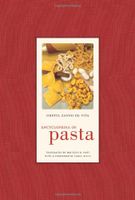Advertisement
Notes
Published 2009
1. F. Kluge, Etymologisches Wörterbuch der deutschen Sprache (Berlin and New York, 1999), 593.
2. A. Maurizio, Histoire de l’alimentation végétale depuis la préhistoire jusqu’à nos jours (Paris, 1932), 482. Apropos of Italy and pasta he had just stated (p. 478): “if it is possible that they were born there as industrial product, it is nevertheless not their country of origin.”
3. Pliny the Elder, Naturalis historia 18.83: “Pulte autem, non pane, vixisse longo tempore Romanos manifestum.”
4. G. Forni, “L’agricoltura: coltivazione ed allevamento,” in Accademia dei Georgofili. Storia dell’agricoltura italiana (Firenze, 2001), 54. On the derivation of pane, “bread,” from pappa, “mush,” Forni brings to bear an illuminating glottological documentation. It is sufficient to note, in German—therefore in a non-Mediterranean language—the affinity between brot = bread and brei = mush, similarly in the Slavic languages to that between chleb and pochlebka (p. 55). The occasion is propitious to recall that according to Maurizio (Histoire, p. 508), the Babylonians called beer “a bread that is drunk,” while bread was called “a beer that is eaten.” And the great Liebig also defined beer as “a liquid bread.” See, on this entire topic, the valuable document of an Italo-Brazilian scholar, A. Barghini, Did man once live by beer alone? (São Paulo: Laboratorio de estudios evolutivos humanos, Cidade universitaria).

